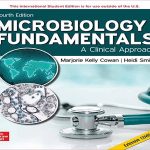- عنوان کتاب: Differential Diagnosis of Autism Spectrum Disorder
- نویسنده: KAT H E R I N E K . M . S TAVROPOULOS, PHD
- حوزه: اوتیسم
- سال انتشار: 2022
- تعداد صفحه: 249
- زبان اصلی: انگلیسی
- نوع فایل: pdf
- حجم فایل: 8.20 مگابایت
اگرچه موارد اوتیسم را میتوان پیش از گزارش کلاسیک کانر در سال 1943 شناسایی کرد (همچنین رجوع کنید به دانوان و زوکر، 2016)، این نبوغ کانر بود که ویژگیهای اصلی را که ما همچنان با اوتیسم مرتبط میکنیم، کنار هم گذاشت: تنهایی اوتیسمی و علایق محدود. مشکلات با تغییر این توصیف ساده و تئوریک بود و حتی در زمانی که ما امروز در مورد مرزهای اوتیسم بحث می کنیم، امتحان خود را پس داده است. سال های اولیه پس از ارائه اولیه کانر با عدم ثبات در تشخیص و چندین باور اشتباه در مورد اوتیسم، به عنوان مثال، ارتباط با اسکیزوفرنی دوران کودکی و فرزندپروری نامناسب مواجه بود. این به طور چشمگیری در دهه 1970 تغییر کرد زیرا سه خط شواهد به اثبات اعتبار اوتیسم به عنوان یک مفهوم تشخیصی کمک کردند. اینها شامل (1) آگاهی از اینکه اوتیسم یک اختلال مبتنی بر مغز است مرتبط با نرخ بالای صرع با اوج شروع در اوایل دوران کودکی و نوجوانی است، (2) اولین مطالعات دوقلو در مورد اوتیسم روشن کرد که یک ژنتیک بسیار قوی وجود دارد. مؤلفه اوتیسم با تطابق بالا در دوقلوهای تک تخمکی، و (3) کودکان مبتلا به اوتیسم بهترین پاسخ را به آموزش ساختاریافته به جای روان درمانی بدون ساختار نشان دادند (برای بحث به جکسون و ولکمار، 2019 مراجعه کنید). در دهه 1970 تلاش هایی برای ارائه دستورالعمل های بالینی بهتر و دقیق تر برای تشخیص، به ویژه دستورالعمل های راتر (1978) انجام شد. در همان زمان، با ظهور معیارهای تشخیصی تحقیقاتی و رویکردهای چند محوری سازگارتر برای تشخیص، تغییرات عمده ای در رویکرد کلی به تشخیص روانپزشکی رخ داد (برای بحث به جکسون و ولکامر، 2019 مراجعه کنید). این تحولات منجر به تصمیم گیری برای گنجاندن اوتیسم به عنوان دسته جدیدی از بیماری در ویرایش سوم راهنمای تشخیصی و آماری اختلالات روانی انجمن روانپزشکی آمریکا (DSM- III) شد (انجمن روانپزشکی آمریکا [APA]، 1980). شناسایی رسمی اوتیسم چیزی را تحریک کرد که به انفجاری از تحقیقات در مورد این بیماری تبدیل شد (Jackson & Volkmar, 2019). با این حال، برخی از مشکلات به سرعت آشکار شد، به ویژه به دلیل عدم جهت گیری توسعه (Volkmar & McPartland، 2014). اینها در تجدید نظر جدید DSM، DSM- III- R (APA، 1987)، که تنها چند سال بعد ظاهر شد، مورد توجه قرار گرفت. در این نسخه، این DSM-III-R تجدید نظر شده دارای جهت گیری توسعه ای و انعطاف پذیر بسیار بیشتری با رویکردی چندگانه (یعنی ترکیب های متفاوتی از ویژگی ها می تواند وجود داشته باشد) به جای رویکرد یکپارچه داشت. دیدگاههای گستردهتر لورنا وینگ به شدت بر مفهوم تشخیصی تأثیر گذاشت (وینگ و گولد، 1979). برای DSM-IV، چندین موضوع مهم در توسعه تعریف مورد توجه قرار گرفت. اینها شامل تلاش برای همگرایی با ویرایش دهم طبقهبندی بینالمللی بیماریها (ICD-10) (سازمان بهداشت جهانی، 1994) و همچنین مجموعهای از بررسیهای اولیه، تحلیل مجدد دادهها و غیره بود. یک آزمایش میدانی بین المللی بزرگ انجام شد که به مدت یک سال به طول انجامید و در نهایت شامل نزدیک به 1000 مورد و بیش از 100 ارزیاب از بیش از 20 سایت در سراسر جهان شد (Volkmar et al., 1994). به عنوان بخشی از این تلاش، همگرایی تعاریف DSM و ICD تا حد زیادی با انعطاف پذیری تشخیصی قابل توجهی به دست آمد. رویکرد چندگانه آن و گروه بندی موارد در سه حوزه سنتی دشواری (اجتماعی، بازی ارتباطی، و علایق محدود) به این معنی است که هر یک از بیش از 22000 ترکیب معیار می تواند منجر به تشخیص اوتیسم شود. علاوه بر این، برخی از دسته بندی های تشخیصی جدید، از جمله اختلال آسپرگر، اکنون در DSM-IV گنجانده شده است. این تعریف نزدیک به دو دهه دوام آورد.
Although cases of autism can, in retrospect, be identified before Kanner’s 1943 classic report (also see Donvan & Zucker, 2016), it was Kanner’s genius to put together the core features that we continue to associate with autism: autistic aloneness and restricted interests/ difficulties with change. This description was straightforward and atheoretical and has stood the test of time even as we debate the boundaries of autism today. The early years following Kanner’s initial presentation were plagued by a lack of consistency in diagnosis and several mistaken beliefs about autism, for example, associations with childhood schizophrenia and inappropriate parenting. This changed dramatically in the 1970s as three lines of evidence helped establish the validity of autism as a diagnostic concept. These included (1) the awareness that autism was a brain- based disorder associated with high rates of epilepsy with peaks of onset in early childhood and adolescence, (2) the first twin studies of autism made it clear that there was a very strong genetic component of autism with high concordance in monozygotic twins, and (3) children with autism responded best to structured teaching rather than unstructured psychotherapy (see Jackson & Volkmar, 2019, for a discussion). Attempts were made in the 1970s to provide better and more accurate clinical guidelines to diagnosis, notably those of Rutter (1978). At the same time, major changes were happening in the overall approach to psychiatric diagnosis with the advent of research diagnostic criteria and the more developmentally friendly multiaxial approaches to diagnosis (see Jackson & Volkamr, 2019, for a discussion). These developments led to the decision to include autism as a new category of the condition in the third edition of the American Psychiatric Association’s Diagnostic and Statistical Manual of Mental Disorders (DSM- III) (American Psychiatric Association [APA], 1980). The official recognition of autism stimulated what became an explosion of research on the condition (Jackson & Volkmar, 2019). However, some difficulties quickly became apparent, particularly due to a lack of developmental orientation (Volkmar & McPartland, 2014). These were addressed in a new revision of DSM, the DSM- III- R (APA, 1987), that appeared only a few years later; in this edition this revised DSM- III- R had a much greater developmental and flexible orientation with a polythetic (i.e., different combinations of features could be present) rather than monothetic approach. Lorna Wing’s broader views heavily influenced the diagnostic concept (Wing & Gould, 1979). For DSM- IV, several important issues were addressed in the development of the definition. These included the attempt to have convergence with the tenth edition of International Classification of Diseases (ICD- 10) (World Health Organization, 1994) as well as a series of preliminary reviews, data reanalysis, and so forth. A large international field trial was undertaken that lasted for a year and eventually included nearly 1,000 cases and over 100 raters from over 20 sites worldwide (Volkmar et al., 1994). As part of this effort, the convergence of the DSM and ICD definitions was largely achieved with considerable diagnostic flexibility. Its polythetic approach and grouping of items into the traditional three realms of difficulty (social, communication play, and restricted interests) meant that any of over 22,000 combinations of criteria could result in an autism diagnosis. In addition, some new diagnostic categories, including Asperger’s disorder, were now included in DSM- IV. This definition endured for nearly two decades.
این کتاب را میتوانید بصورت رایگان از لینک زیر دانلود نمایید.
Download: Differential Diagnosis of Autism Spectrum Disorder


































نظرات کاربران